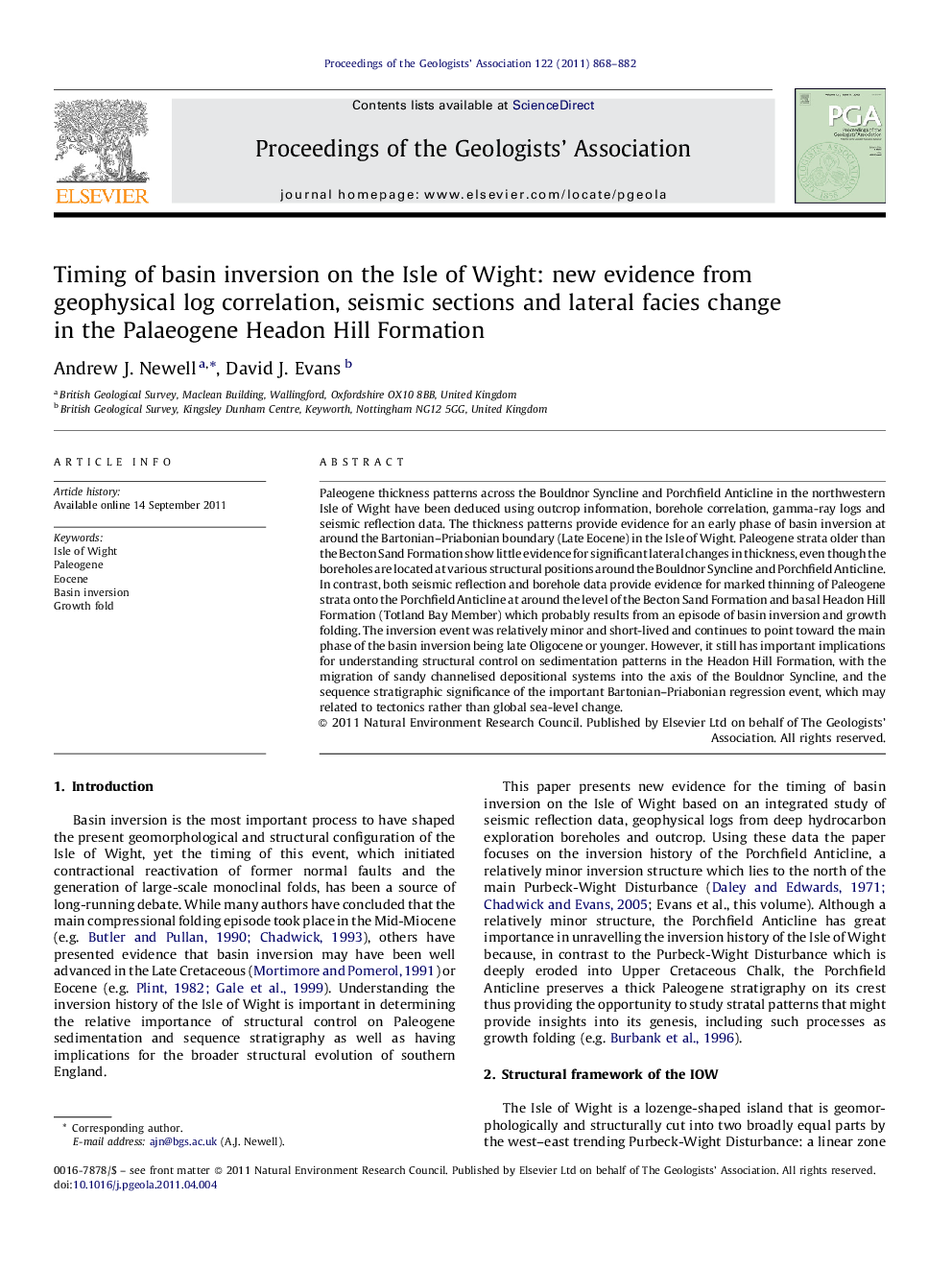| Article ID | Journal | Published Year | Pages | File Type |
|---|---|---|---|---|
| 4734770 | Proceedings of the Geologists' Association | 2011 | 15 Pages |
Paleogene thickness patterns across the Bouldnor Syncline and Porchfield Anticline in the northwestern Isle of Wight have been deduced using outcrop information, borehole correlation, gamma-ray logs and seismic reflection data. The thickness patterns provide evidence for an early phase of basin inversion at around the Bartonian–Priabonian boundary (Late Eocene) in the Isle of Wight. Paleogene strata older than the Becton Sand Formation show little evidence for significant lateral changes in thickness, even though the boreholes are located at various structural positions around the Bouldnor Syncline and Porchfield Anticline. In contrast, both seismic reflection and borehole data provide evidence for marked thinning of Paleogene strata onto the Porchfield Anticline at around the level of the Becton Sand Formation and basal Headon Hill Formation (Totland Bay Member) which probably results from an episode of basin inversion and growth folding. The inversion event was relatively minor and short-lived and continues to point toward the main phase of the basin inversion being late Oligocene or younger. However, it still has important implications for understanding structural control on sedimentation patterns in the Headon Hill Formation, with the migration of sandy channelised depositional systems into the axis of the Bouldnor Syncline, and the sequence stratigraphic significance of the important Bartonian–Priabonian regression event, which may related to tectonics rather than global sea-level change.
